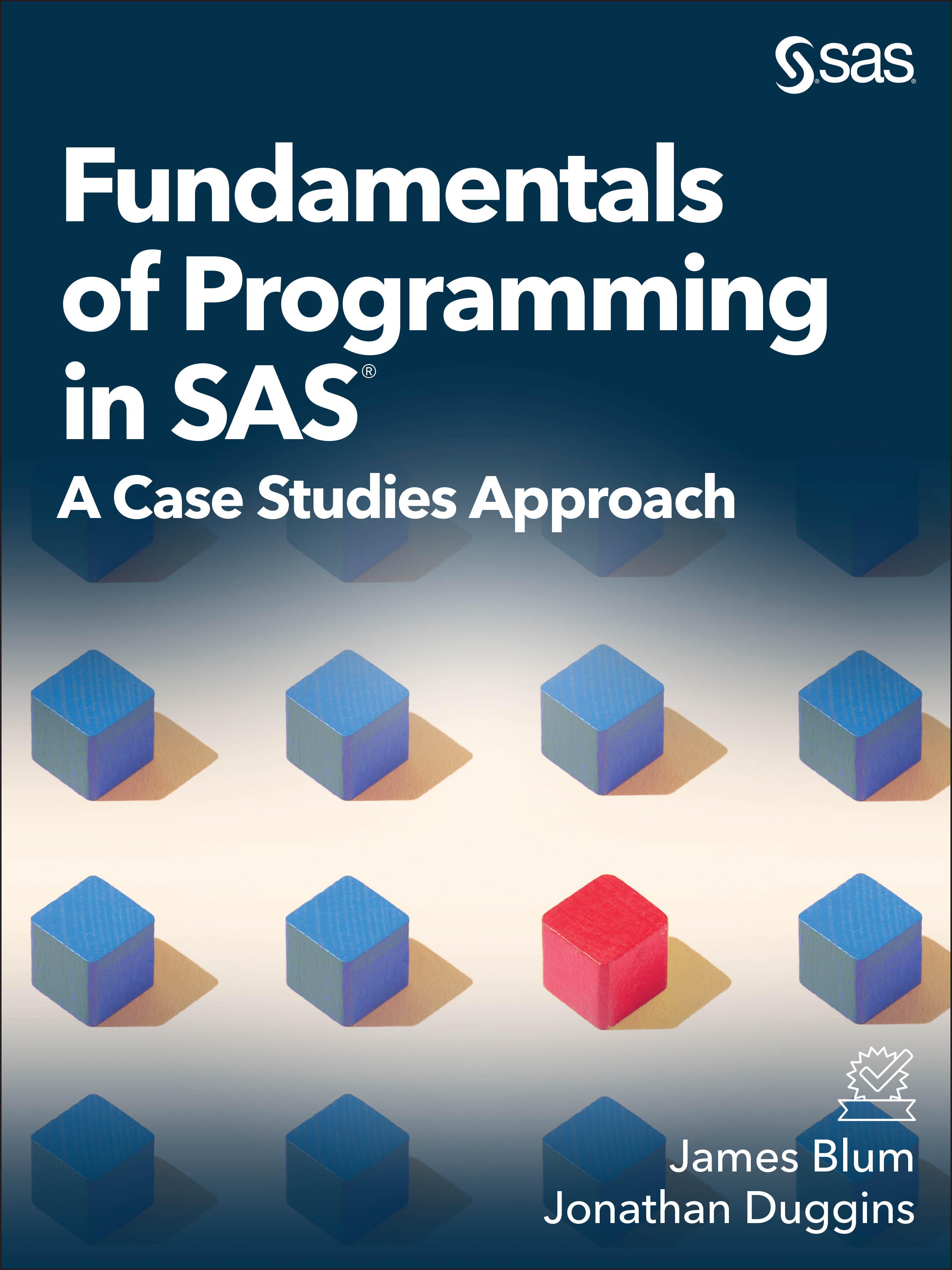Want to learn SAS programming but worried about taking the plunge? Over at SAS Press, we are excited about an upcoming publication that introduces newbies to SAS in a peer-review instruction format we have found popular for the classroom. Professors Jim Blum and Jonathan Duggins have written Fundamentals of Programming in SAS using a spiral curriculum that builds upon topics introduced earlier and at its core, uses large-scale projects presented as case studies. To get ready for release, we interviewed our new authors on how their title will enhance our SAS Books collection and which of the existing SAS titles has had an impact on their lives!
What does your book bring to the SAS collection? Why is it needed?
Blum & Duggins: The book is probably unique in the sense that it is designed to serve as a classroom textbook, though it can also be used as a self-study guide. That also points to why we feel it is needed; there is no book designed for what we (and others) do in the classroom. As SAS programming is a broad topic, the goal of this text is to give a complete introduction of effective programming in Base SAS – covering topics such as working with data in various forms and data manipulation, creating a variety of tabular and visual summaries of data, and data validation and good programming practices.
The book pursues these learning objectives using large-scale projects presented as case studies. The intent of coupling the case-study approach with the introductory programming topics is to create a path for a SAS programming neophyte to evolve into an adept programmer by showing them how programmers use SAS, in practice, in a variety of contexts. The reader will gain the ability to author original code, debug pre-existing code, and evaluate the relative efficiencies of various approaches to the same problem using methods and examples supported by pedagogical theory. This makes the text an excellent companion to any SAS programming course.
What is your intended audience for the book?
Blum & Duggins: This text is intended for use in both undergraduate and graduate courses, without the need for previous exposure to SAS. However, we expect the book to be useful for anyone with an aptitude for programming and a desire to work with data, as a self-study guide to work through on their own. This includes individuals looking to learn SAS from scratch or experienced SAS programmers looking to brush up on some of the fundamental concepts. Very minimal statistical knowledge, such as elementary summary statistics (e.g. means and medians), would be needed. Additional knowledge (e.g. hypothesis testing or confidence intervals) could be beneficial but is not expected.
What SAS book(s) changed your life? How? And why?
Blum: I don’t know if this qualifies, but the SAS Programming I and SAS Programming II course notes fit this best. With those, and the courses, I actually became a SAS programmer instead of someone who just dabbled (and dabbled ineffectively). From there, many doors were opened for me professionally and, more importantly, I was able to start passing that knowledge along to students and open some doors for them. That experience also served as the basis for building future knowledge and passing it along, as well.
Duggins: I think the two SAS books that most changed my outlook on programming (which I guess has become most of my life, for better or worse) would either be The Essential PROC SQL Handbook for SAS Users by Katherine Prairie or Jane Eslinger's The SAS Programmer's PROC REPORT Handbook, because I read them at different times in my SAS programming career. Katherine's SQL book changed my outlook on programming because, until then, I had never done enough SQL to consistently consider it as a viable alternative to the DATA step. I had taken a course that taught a fair amount of SQL, but since I had much more experience with the DATA step and since that is what was emphasized in my doctoral program, I didn't use SQL all that often. However, after working through her book, I definitely added SQL to my programming arsenal. I think learning it, and then having to constantly evaluate whether the DATA step or SQL was better suited to my task, made me a better all-around programmer.
As for Jane's book - I read it much later after having used some PROC REPORT during my time as a biostatistician, but I really wasn't aware of how much could be done with it. I've also had the good fortune to meet Jane, and I think her personality comes through clearly - which makes that book even more enjoyable now than it was during my first read!
Read more
We at SAS Press are really excited to add this new release to our collection and will continue releasing teasers until its publication. For almost 30 years SAS Press has published books by SAS users for SAS users. Here is a free excerpt located on our Duggins' author page to whet your appetite. (Please know that this excerpt is an unedited draft and not the final content). Look out for news on this new publication, you will not want to miss it!
Want to find out more about SAS Press? For more about our books, subscribe to our newsletter. You’ll get all the latest news and exclusive newsletter discounts. Also, check out all our new SAS books at our online bookstore.

